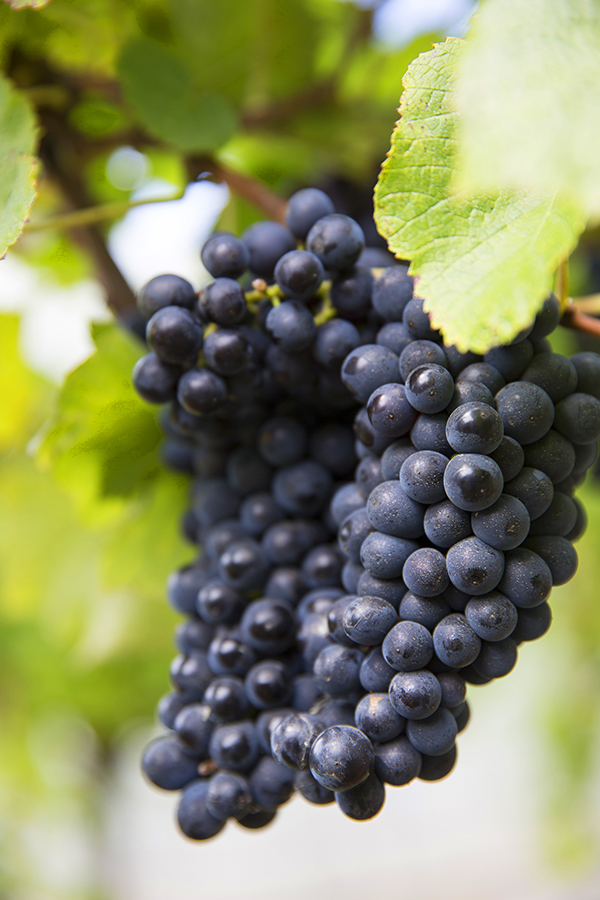Certain grape varieties, like football teams, engender strong supportive feelings in individuals. Perhaps, they enjoy an exalted reputation as a noble variety and accrue a mythology around themselves. We hear what we hear, we read what we read, and thus we feel a deep desire for certain wines, to touch the hem of perceived greatness, and to be initiated into the masonic mysteries of wine nobility. It is the same with public veneration of royalty, as if a group of people by accident of birth, and by some divine right, necessarily deserve our deep admiration and respect.
Reality provides a cold splash. For all our belief (and desire) that these certain wines possess intrinsic beauty and transcendent quality, we may end up disappointed in them more often than not. How can the wine in question live up to our lofty expectations? When we engage our critical faculties and examine what is before us, the clouds of glory often dissipate. What we think of as good taste is a fantasy.
…to touch the hem of perceived greatness, and to be initiated into the masonic mysteries of wine nobility.
In my case, the grape variety that promises so much, yet leaves me hankering for more (or less), is Pinot Noir.
Pinot Noir, the eternal temptress grape in which many of us invest so much anthropomorphic heft, with its ineffably regal aromas leading to the velveteen procession down your throat and compelling one to segue intoxicatedly into the soliloquy, that rhapsody in Burgundy, from Sideways:
It’s thin-skinned, temperamental, ripens early. It’s, you know, it’s not a survivor like Cabernet, which can just grow anywhere and uh, thrive even when it’s neglected. No, Pinot needs constant care and attention. You know? And in fact it can only grow in these really specific, little, tucked away corners of the world. And, and only the most patient and nurturing of growers can do it, really. Only somebody who really takes the time to understand Pinot’s potential can then coax it into its fullest expression. Then, I mean, oh its flavours, they’re just the most haunting and brilliant and thrilling and subtle and… ancient on the planet.
Yes, I went there.
If we were to board the flight of fancy to unalloyed Cote d’Or-shire, then Pinot Noir might truly be said to have transcendence inscribed in its very rainbow genes. Much has been written about the grape, and, in particular, its Burgundian embodiment. Quasi-mystical powers are ascribed to it: with sister Chardonnay, it is the arch terroir-translator, the variety that speaks so eloquently and poignantly not only of the villages and sacred vineyards from which it hails, but even the rows and blocks of earth in which it plants its feet. Once bottled, it whistles its own devilish tune and dances to it. It can be playful and annoyingly capricious. Its nose can be a long as Pinotcchios or shy and retroussé. It may be gamine (not Gamay), kittenish and charming, or serious and profound. It can be light or dark, primary or evolved, the freshness of spring or the decay of autumn, it can be musky, sanguine, medicinal and ethereal. All that jazzapalooza.
But, having said all that, why, oh why, can’t a Pinot be more like a Pinot?
For far too often, I lever the cork from the bottle housing the above-mentioned grape variety, inhale its initial bewitching promise, and then… and then the wine all-too-often slowly degrades, sinking eventually into clunk, clag and cloy. Ripeness seems to topple into confection, background oak moves into the foreground and super-imposes charry notes, the velvet glove is revealed to be encasing a chocolate fist. And alcohol! Wallop. Shiraz-palooza. What is happening? Is it the wine, or is it me? And why?
Pinot Noir, the eternal temptress grape in which many of us we invest so much anthropomorphic heft
I am caricaturing the situation, of course. Not every bottle stumbles down this path, yet the evolution of the wine from something that promises so much at first sniff and sip to one that is disappointingly lacklustre and devoid of vitality, is one that I have all-too frequently encountered.
By its very nature, Pinot Noir must always dance on the knife edge of balance. And therein lies the inbuilt flaw. Its lucidity may be so easily bruised by clumsy intervention. Oak, for example, must be handled by the winemaker with care so that it does not become a superimposition on the wine. Long maceration allied to powerful extraction may rob Pinot of its singular personality. Noisy oenological techniques that are used to exalt the hedonistic personality of grape variety diminish its eloquence.
I have always idolised Pinot Noir. Made it into a construct, a vessel built to contain my dreams of wine perfection. All my feelings about the grape were based on the memories of wines that razzle-dazzled me. In hindsight, I am uncertain whether these are bona fide memories of wines tasted and feelings engendered at the time, or the mind playing tricks, conflating a highlights reel of best sensory Pinot Noir moments with a interior narrator’s voice whispering auto-suggestively to me and reminding me of the potent glories of the grape, so that I truly believe in a platonic Pinot, both wonderful and impossible.
*
Interested in finding out more about the very wonderful and not-at-all-lacklustre Pinot Noir wines we bring in? Contact us directly:
shop@lescaves.co.uk | sales@lescaves.co.uk | 01483 538820


